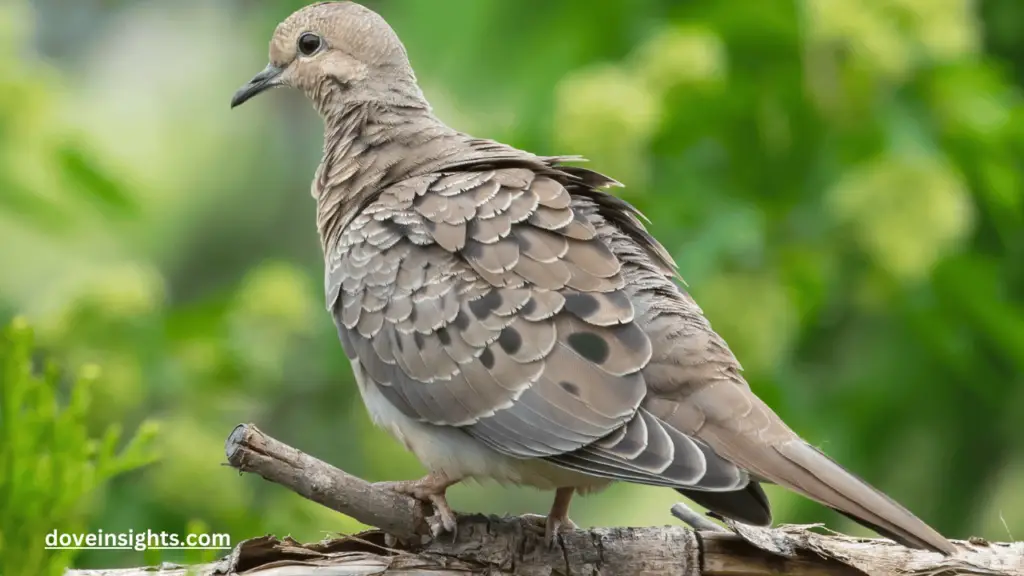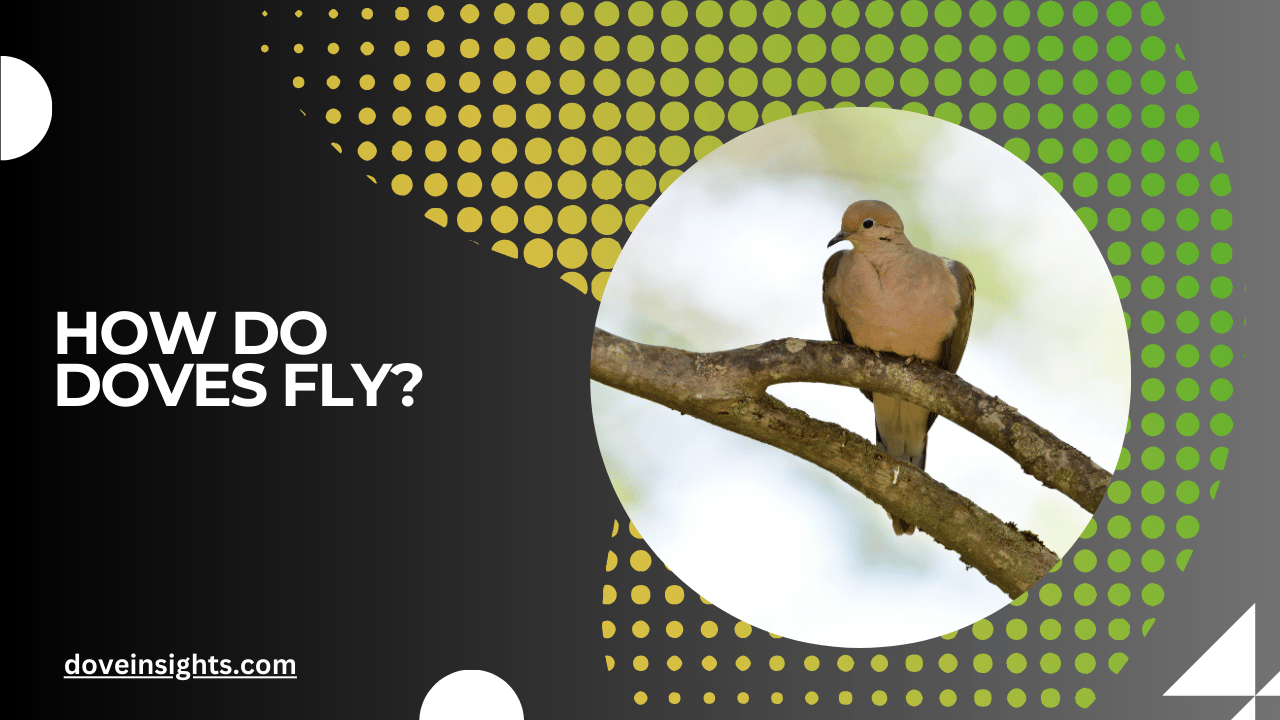When you see a dove gracefully gliding across the sky, you might marvel at its elegance, the way it moves with such ease and fluidity.
But have you ever wondered how do doves fly? Is it just an effortless journey through the air, or is there more science behind the wings of these majestic creatures than meets the eye?
Doves, like other birds, have evolved a sophisticated method of flight that allows them to soar, hover, and maneuver through the air with impressive precision.
Understanding how doves fly can shed light on their biomechanics, their evolutionary adaptations, and even their symbolic significance in various cultures. The way doves fly is not only crucial for their survival and migration but also impacts their communication and territorial behaviors.
In this article, we will dive into the fascinating science of dove flight.
From the mechanics of their wings to the environmental factors that influence their aerial abilities, we’ll explore everything you need to know about how doves navigate the skies.
Whether you’re a bird enthusiast or just curious about the natural world, this in-depth look will provide a fresh perspective on one of nature’s most graceful creatures.
Contents
The Anatomy of Dove Flight
Before we can understand how doves fly, it’s essential to explore the unique features of their anatomy that make flight possible. Doves, like all birds, have a specialized skeletal system, musculature, and feather structure that are uniquely adapted to flying.
One of the most important factors in dove flight is their wing shape. Doves have long, pointed wings that are designed for fast, efficient flying.
These wings allow them to achieve high speeds and quick takeoffs. Their wing muscles, particularly the pectoralis major (the muscle responsible for wing movement), are well-developed and allow for powerful downstrokes that generate the lift needed to stay airborne.
Their feathers, too, play a crucial role in flight. The primary feathers on the outer wings provide the thrust needed for forward motion, while the secondary feathers on the inner wings help with maneuverability and stability during flight.
The feathers overlap in a way that reduces drag and allows the doves to move efficiently through the air.
Additionally, doves have a lightweight body structure, which reduces the overall weight that needs to be lifted by their wings. This makes it easier for them to stay in flight for extended periods without expending too much energy.
Together, these anatomical adaptations make doves exceptional fliers, capable of swift and agile movements.
The Mechanics of Dove Flight
Now that we understand the anatomy of doves, let’s dive deeper into the mechanics of how they actually fly. The basic principle behind bird flight involves the generation of lift and thrust. Doves achieve lift through the movement of their wings, while thrust propels them forward.
When a dove begins to fly, it flaps its wings downward, creating an upward force called lift. The shape of the wings ensures that air pressure below the wings is greater than the pressure above, which lifts the dove into the air.
As the wings move upward, they generate thrust by pushing air downward, creating the forward motion needed to move through the air.
Doves also employ a technique known as flap-gliding flight, which allows them to conserve energy. By flapping their wings in a series of rapid downstrokes, they generate the necessary lift and thrust.
However, instead of constantly flapping, they enter a gliding phase, where their wings are held outstretched, allowing them to coast effortlessly through the air for short distances before resuming flapping.
This alternating flight pattern helps doves cover long distances while expending minimal energy.
Types of Dove Flight and Maneuverability
While doves are best known for their graceful gliding, they are also capable of a wide variety of flight maneuvers. From quick, sharp turns to sudden bursts of speed, doves have the ability to navigate through a range of environments, making them incredibly adaptable to different surroundings.
One of the primary types of flight that doves engage in is migratory flight. Many species of doves, such as the mourning dove, migrate long distances during the seasonal changes.
Their ability to fly for extended periods with minimal effort allows them to cover vast expanses in search of food, water, and suitable breeding grounds.
Additionally, doves are known for their sharp turns and ability to hover in place. These skills are vital for avoiding predators, defending their territory, and finding food. The wingbeat pattern of doves is highly flexible, allowing them to adjust their flight style depending on the situation.
In fact, they can make 90-degree turns and even fly backward, thanks to their maneuverability and wing control.
Doves use their tail feathers as a rudder, steering their direction and providing stability during flight. By spreading or closing the tail, doves can alter their flight path, adjust speed, and maintain balance.
Environmental Factors Affecting Dove Flight
While doves are excellent fliers, they are still influenced by various environmental factors that can affect their ability to fly effectively. Factors such as wind, temperature, and weather conditions all play a role in how doves navigate the skies.
For instance, strong winds can either help or hinder a dove’s flight, depending on the direction.
When flying with the wind at their back, doves can achieve greater speeds and cover more distance with less energy expenditure. However, flying against strong winds can make flight more challenging, requiring the dove to exert more energy.
Thermal currents are another important factor.
Doves, like many birds, often take advantage of rising warm air currents to glide for long distances without having to flap their wings continuously. These updrafts allow the birds to soar effortlessly and conserve energy while covering great distances.
Finally, weather conditions, such as rain or storms, can significantly impact a dove’s ability to fly. Doves are sensitive to changes in barometric pressure and are typically less active during bad weather.
They will often seek shelter during storms and heavy rain, waiting for conditions to improve before taking flight again.
Why Doves Fly: Survival and Communication

Doves don’t just fly for the sake of aerial beauty—their flight is essential for their survival and communication. Doves need to be able to fly to escape predators, find food sources, and travel to new breeding grounds during seasonal changes.
In addition to the physical necessity of flight, doves also use flight as a way to communicate with each other.
Their aerial displays, especially during the breeding season, are an important way to attract mates and assert territorial dominance. Male doves often perform elaborate flight patterns to court females, showcasing their strength and agility.
These aerial displays help establish pair bonds and determine territorial boundaries between different dove populations.
Moreover, flight is also a crucial component of dove migration. During seasonal changes, doves may travel thousands of miles in search of food and suitable habitats.
Their ability to navigate over long distances using a combination of instinct, sun position, and landmarks ensures their survival as they adapt to changing environmental conditions.
Conclusion:
The flight of a dove is not just a graceful dance through the sky; it is a sophisticated blend of anatomy, mechanics, and environmental awareness.
Understanding how doves fly gives us a deeper appreciation for these incredible birds and the remarkable adaptations that allow them to navigate the world with ease.
From the powerful wings that generate lift and thrust to the graceful gliding that conserves energy, every aspect of a dove’s flight is a testament to nature’s ingenuity. Doves use flight not only to survive but also to communicate, migrate, and interact with one another.
Their ability to maneuver, glide, and soar is an essential part of their biology and behavior, allowing them to thrive in various environments across the globe.
By studying dove flight, we can gain a better understanding of how evolution shapes the behavior and survival strategies of animals, and how flight remains one of the most fascinating and vital aspects of their existence.
FAQ’s
What makes doves such good fliers?
Doves have lightweight bodies, powerful wing muscles, and streamlined feathers, allowing them to fly efficiently and with agility.
Can doves hover like hummingbirds?
Yes, doves can hover for short periods, typically when they are searching for food or avoiding predators.
Doves use a combination of instinct, the position of the sun, and landmarks to navigate during long-distance migration.
Do doves ever fly in flocks?
Yes, doves often fly in small flocks, especially during migration, to help protect themselves from predators.
How far can doves fly in one go?
Doves can cover distances of up to 600 miles per day during migration.
Do doves fly at night?
Doves typically fly during the daytime, but they may travel at night during migration if necessary.








